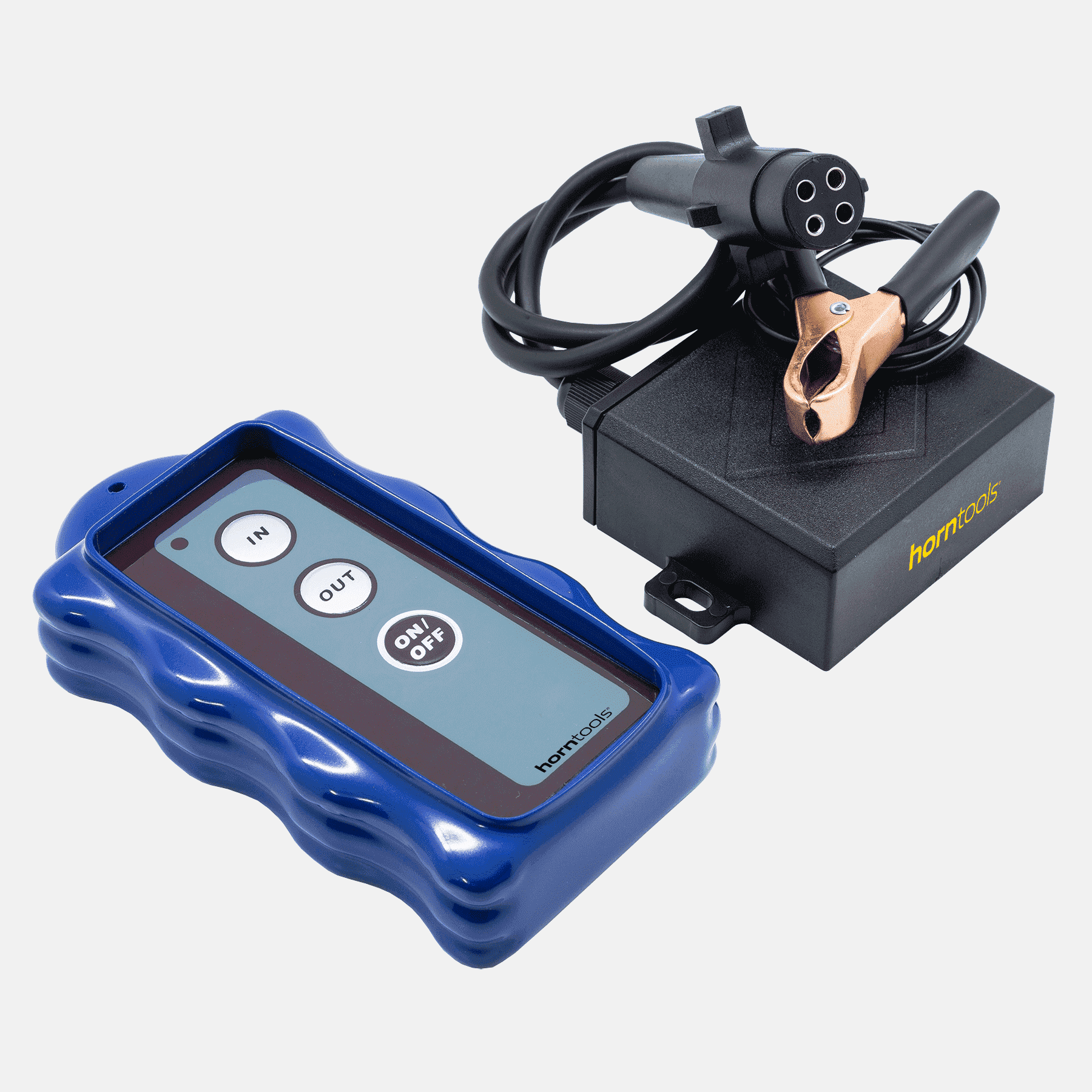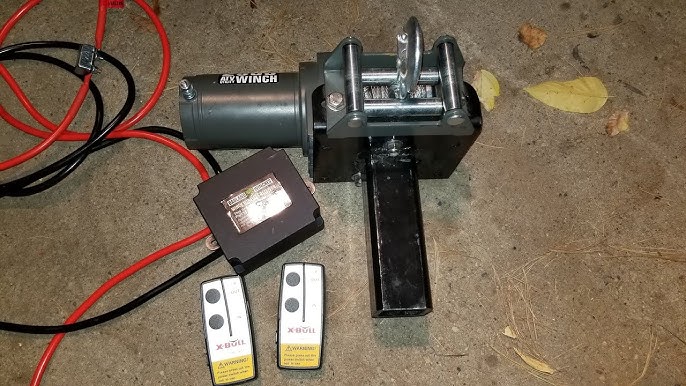How To Use Winch Without Remote: Expert Tips for Safe Operation
Using a winch without a remote might seem challenging. But it can be simple and safe.
Winches are essential for many tasks, from towing vehicles to lifting heavy objects. While most winches come with a remote, there are times when you might need to operate one without it. Maybe the remote is lost, broken, or you just prefer manual control.
Whatever the reason, knowing how to use a winch without a remote is a valuable skill. In this guide, we will walk you through the steps to operate a winch manually, ensuring you can handle any situation with confidence and safety. Let’s get started!
Introduction To Winch Operation
Operating a winch without a remote can seem daunting at first. But with the right knowledge, it becomes manageable. Winches are powerful tools used to pull or lift heavy loads. Understanding their operation ensures safety and efficiency.
Importance Of Safe Practices
Safety is crucial when using a winch. Always inspect the winch and cable before use. Make sure everything is in good working order. Wear gloves to protect your hands from the cable. Avoid standing close to the winch cable under tension. This prevents injuries if the cable snaps.
Common Uses Of Winches
Winches have many applications. They are often used in off-road recovery. When a vehicle gets stuck, a winch can pull it free. Winches are also used in construction. They help move heavy materials safely. In farming, winches assist in lifting equipment. Their versatility makes them valuable tools in many fields.

Credit: www.horntools.com
Understanding Winch Components
Understanding the components of a winch is crucial for safe and effective operation. Knowing each part and its function helps in using the winch without a remote. This section will break down the main parts of a winch and explain their roles.
Main Parts Of A Winch
A winch consists of several key components. The main parts are the motor, drum, cable, and gear train. Each part plays a vital role in the winch’s operation.
Role Of Each Component
The motor provides the power needed to turn the drum. It can be electric or hydraulic. The drum is where the cable is wound. It rotates to pull in or let out the cable.
The cable, usually made of steel or synthetic material, is strong and durable. It is used to pull or lift heavy loads. The gear train controls the speed and torque of the drum. It ensures smooth and efficient operation.
Understanding these components helps in troubleshooting and using the winch manually. Knowing each part allows for better control and safety during winch operations.
Manual Winch Operation Basics
Operating a winch manually can be necessary in various situations. Understanding the basics is crucial for safety and efficiency. This guide will walk you through the essential steps for manual winch operation without a remote.
Necessary Tools
Before starting, gather all required tools. Ensure you have a sturdy pair of gloves to protect your hands. A winch handle is essential for manual operation. Check that your winch handle fits properly. A strong anchor point is also necessary. This provides stability during the winching process.
Initial Setup Steps
First, secure your vehicle or object to a solid anchor point. Use a durable tow strap or winch cable for this. Next, attach the winch handle to the winch drum. Make sure it is tight and secure. Test the handle’s movement before proceeding.
Engage the winch clutch to the manual position. This allows you to control the winch manually. Slowly turn the winch handle to pull the cable. Maintain a steady pace to avoid jerking movements. Keep an eye on the cable alignment. Ensure it winds evenly on the drum.
Step-by-step Manual Winch Usage
Using a winch without a remote can seem daunting. But with the right steps, it becomes straightforward. This guide will walk you through the step-by-step manual winch usage. Follow these instructions carefully to ensure a smooth operation.
Engaging The Clutch
First, you need to engage the clutch. This step is crucial. It allows the winch to operate manually. Follow these steps:
- Locate the clutch lever on your winch.
- Pull the lever to disengage the clutch.
- Manually pull out the winch cable.
- Once the cable is out, push the lever back to engage the clutch.
Operating The Winch Handle
After engaging the clutch, the next step is to operate the winch handle. This is how you will manually wind the cable back in. Follow these steps:
- Attach the winch handle to the winch drum.
- Ensure it is securely in place.
- Begin rotating the handle clockwise.
- Keep rotating until the cable is fully wound.
Operating the winch handle requires steady hands. Take your time and ensure the cable winds properly.
Safety Precautions
Using a winch without a remote can be tricky and dangerous. Follow safety precautions to ensure a smooth and safe operation. This section will cover essential safety measures.
Wearing Protective Gear
Always wear protective gear when operating a winch. A sturdy pair of gloves protects your hands. Wear safety goggles to shield your eyes from debris. A hard hat can prevent head injuries. Proper footwear ensures stability and safety. Protective clothing like long sleeves and pants can safeguard your skin.
Maintaining A Safe Distance
Keep a safe distance from the winch line. Standing too close can be hazardous. Ensure bystanders are also at a safe distance. Mark the danger zone with visible signs or cones. Warn everyone nearby about the ongoing operation. Avoid stepping over or under a tensioned winch line. Be alert and cautious at all times.

Credit: www.youtube.com
Troubleshooting Common Issues
Using a winch without a remote can be tricky. Sometimes, problems arise that can delay your work. Knowing how to troubleshoot these issues helps you get back on track quickly.
Dealing With Winch Jams
Winch jams are common. They can happen due to dirt or debris. Start by turning off the winch. Inspect the drum and cable. Look for any visible blockages. Use a stick or tool to remove dirt. Avoid using your hands to prevent injury.
If the cable is tangled, unwind it manually. Ensure the cable is straight before rewinding. Always check the drum for smooth operation. Regular maintenance can prevent future jams.
Addressing Cable Overlap
Cable overlap is another issue. It occurs when the cable wraps unevenly. This can cause the winch to malfunction. First, turn off the winch. Slowly pull out the cable to untangle it. Lay the cable flat on the ground.
Rewind the cable evenly. Keep tension on the cable as you wind it. This helps prevent future overlaps. Inspect the cable for any damage. Replace it if you find any frays or cuts.
By following these steps, you can avoid common winch problems. Proper maintenance and careful use are key.
Maintenance Tips
Maintaining your winch is essential for its longevity and performance. Regular care can prevent malfunctions and extend its life. This section covers essential maintenance steps.
Regular Inspection
Check the winch for any signs of wear and tear. Look at the cables, hooks, and mounting bolts. Ensure everything is tight and secure. Inspect the electrical connections. Ensure there are no loose or frayed wires. Regular inspection helps catch issues early.
Lubrication And Cleaning
Lubricate the winch parts to keep them moving smoothly. Use a proper lubricant designed for winches. Clean the winch regularly to remove dirt and debris. Dirt can cause the winch to work harder. This can lead to overheating and damage.
Keep the winch dry. Water can cause rust and corrosion. Store the winch in a dry place when not in use. This will help maintain its condition.

Credit: www.youtube.com
Advanced Techniques
Using a winch without a remote requires knowledge of advanced techniques. These methods can help you safely and effectively recover vehicles from difficult situations. Let’s explore two important techniques: using snatch blocks and winching at an angle.
Using Snatch Blocks
A snatch block is a pulley device used to increase a winch’s pulling power. It can also change the direction of the pull.
- First, attach the snatch block to a strong anchor point.
- Next, run the winch cable through the snatch block.
- Secure the cable to the vehicle you want to recover.
This setup doubles the pulling power of your winch. It also reduces the strain on the winch motor. Always check the snatch block’s capacity. Ensure it matches or exceeds your winch’s rating.
Winching At An Angle
Sometimes you need to winch at an angle. This is common in off-road recoveries. Follow these steps:
- Identify a strong anchor point.
- Connect the winch cable to the anchor.
- Use a snatch block to change the direction of the pull.
Ensure the winch cable is not rubbing against sharp edges. Use a tree saver strap to protect trees and the cable. This technique helps when the vehicle cannot be pulled straight. It also helps prevent damage to the vehicle and the environment.
Both techniques require practice. Always prioritize safety. Use these advanced methods to enhance your winching skills without a remote.
Frequently Asked Questions
How Do You Manually Operate A Winch?
To manually operate a winch, locate the clutch lever and engage it. Use the hand crank to wind the cable.
What Tools Are Needed To Use A Winch Without A Remote?
You need a hand crank or a manual control switch. Ensure you have safety gloves and goggles.
Can You Use A Winch Without A Battery?
Yes, but it’s challenging. Use a manual hand winch that doesn’t require electrical power.
How Do You Engage A Winch Clutch?
To engage the winch clutch, move the lever to the “engage” position. Ensure it’s securely locked.
Conclusion
Operating a winch without a remote can be straightforward. Follow safety measures closely. Always keep clear communication with your team. Use manual controls wisely. Practice can make the task easier. This method can be handy in emergencies. Remember to regularly maintain your winch.
This ensures reliability and safety. Always consult your winch manual for specific instructions. Stay safe and winch smartly.






